The Shin Ei WT-1 Wah Pedal
Last updated 02/02/23
By Paul Marossy
For a while now I've been wanting to get my hands on one of these Japanese manufactured wah pedals from the 1970s. I saw one on Ebay and purchased it
from a seller in Canada. I have always been curious as to how this wah pedal would sound if *I* were using it. Also, the little transformer
used in lieu of the traditional 500mH inductor had piqued my curiousity... I wanted to learn more about that. There really is nothing special
about the inductor in a wah pedal, it's really only there to make the circuit a resonant circuit. Yes, it is true that certain inductors
exhibit core saturation which imparts some measure of distortion, but inductors are generally made in such a way that they DO NOT do that.
Here is a little more about this Shin-Ei WT-1 which was manufactured in 1976:
 |
It looks better than many of the wah pedals of the time. The enclosure is basically made of heavy gage stamped steel. I like the rings around the jacks that tell you what you're supposed to plug into it. |
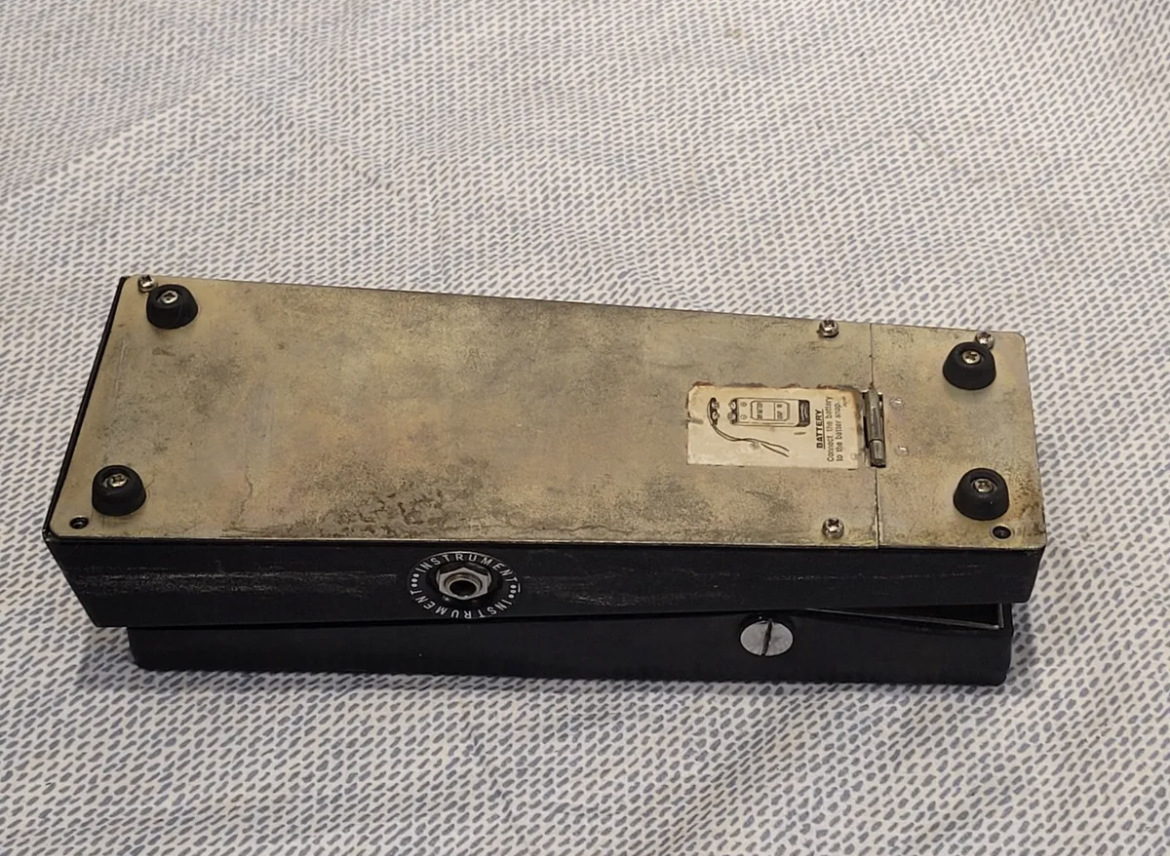 |
Here is the bottom with a rather unique hinged battery door arrangement. |
 |
Here is a look inside. The circuit board is pretty compact. |
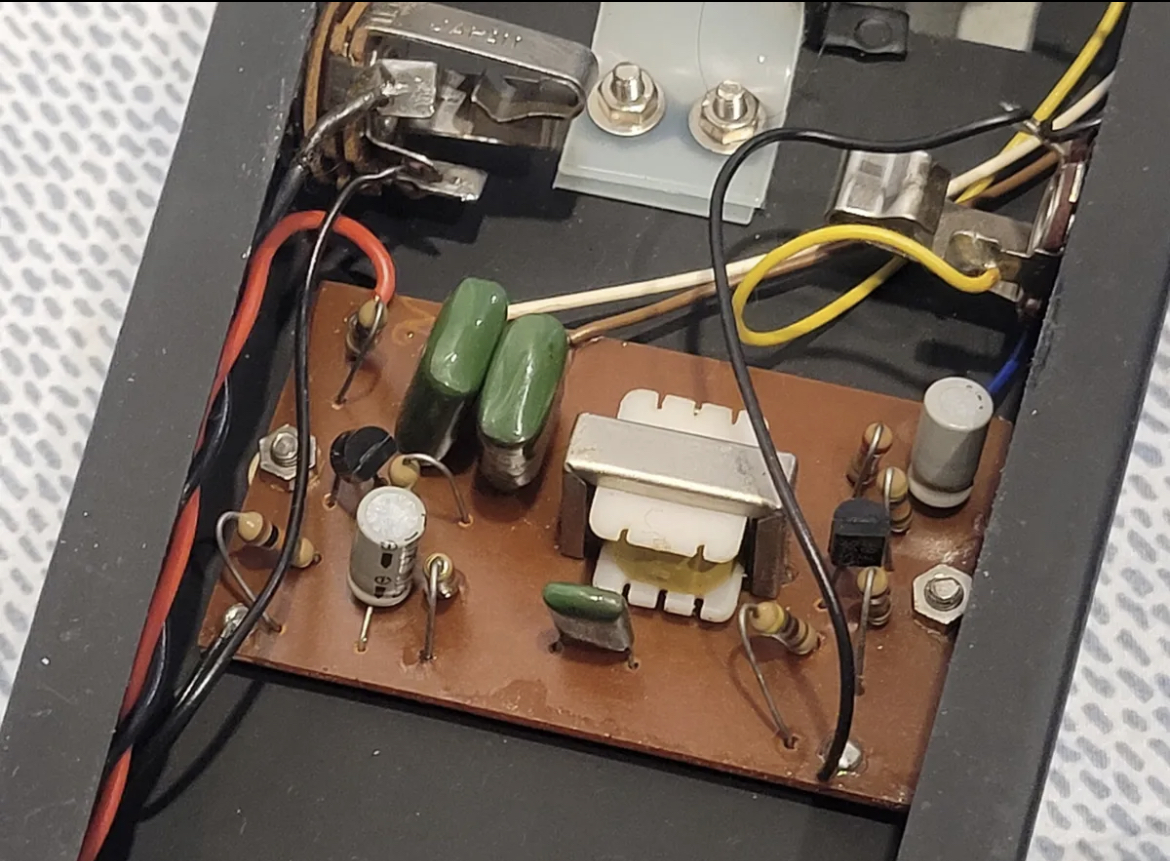 |
One thing that is immediately apparent is that there is no conventional inductor. They have used what appears to be a small audio transformer in lieu of an inductor. The interesting thing is that it was intentionally wound with no secondary. Curve tracer testing did not show any saturation or anything odd from 30Hz all the way up to 30kHz. It measured 746mH & 48 ohms DC resistance. |
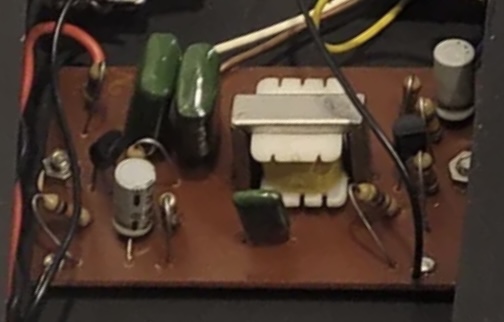 |
The transistors used in this example are marked "C536F". Not sure what they are equivalent to. |
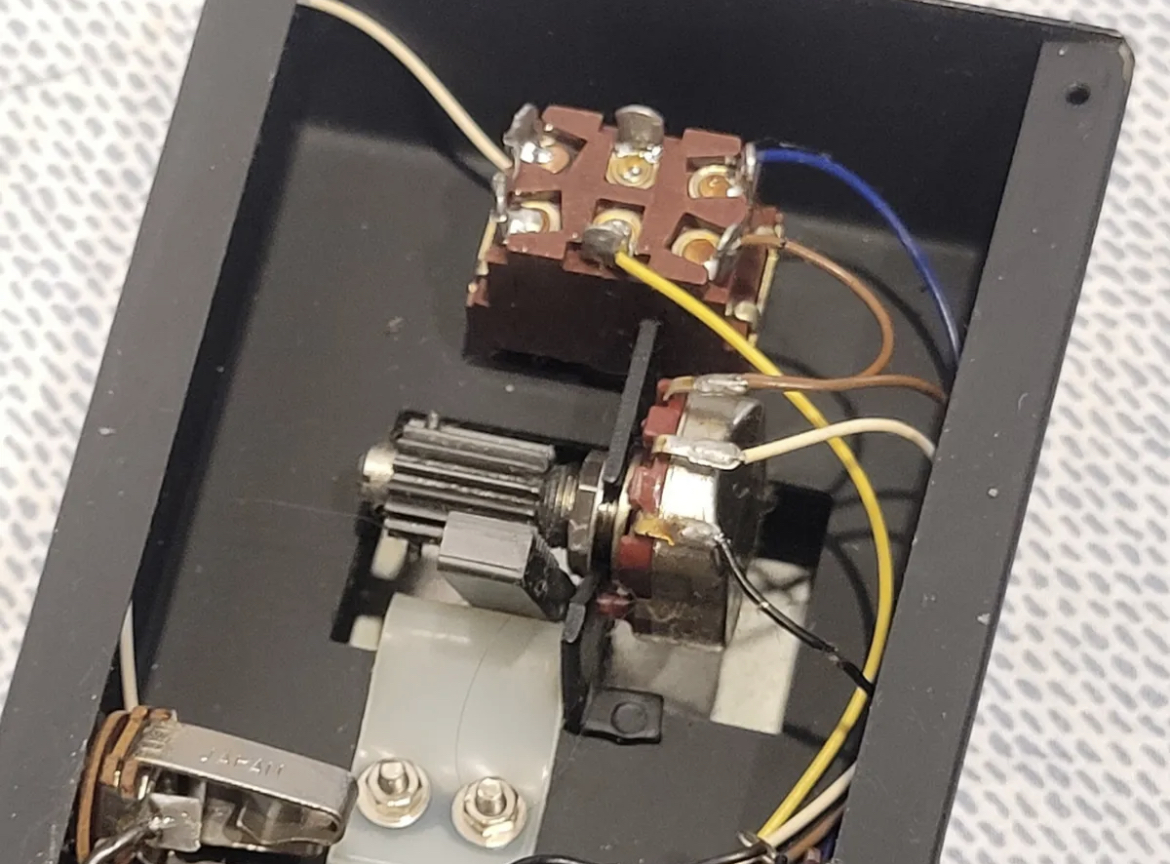 |
Note the DPDT bypass switch. This enabled them to have true bypass switching, which other contemporary wah pedals of the time did not have. |
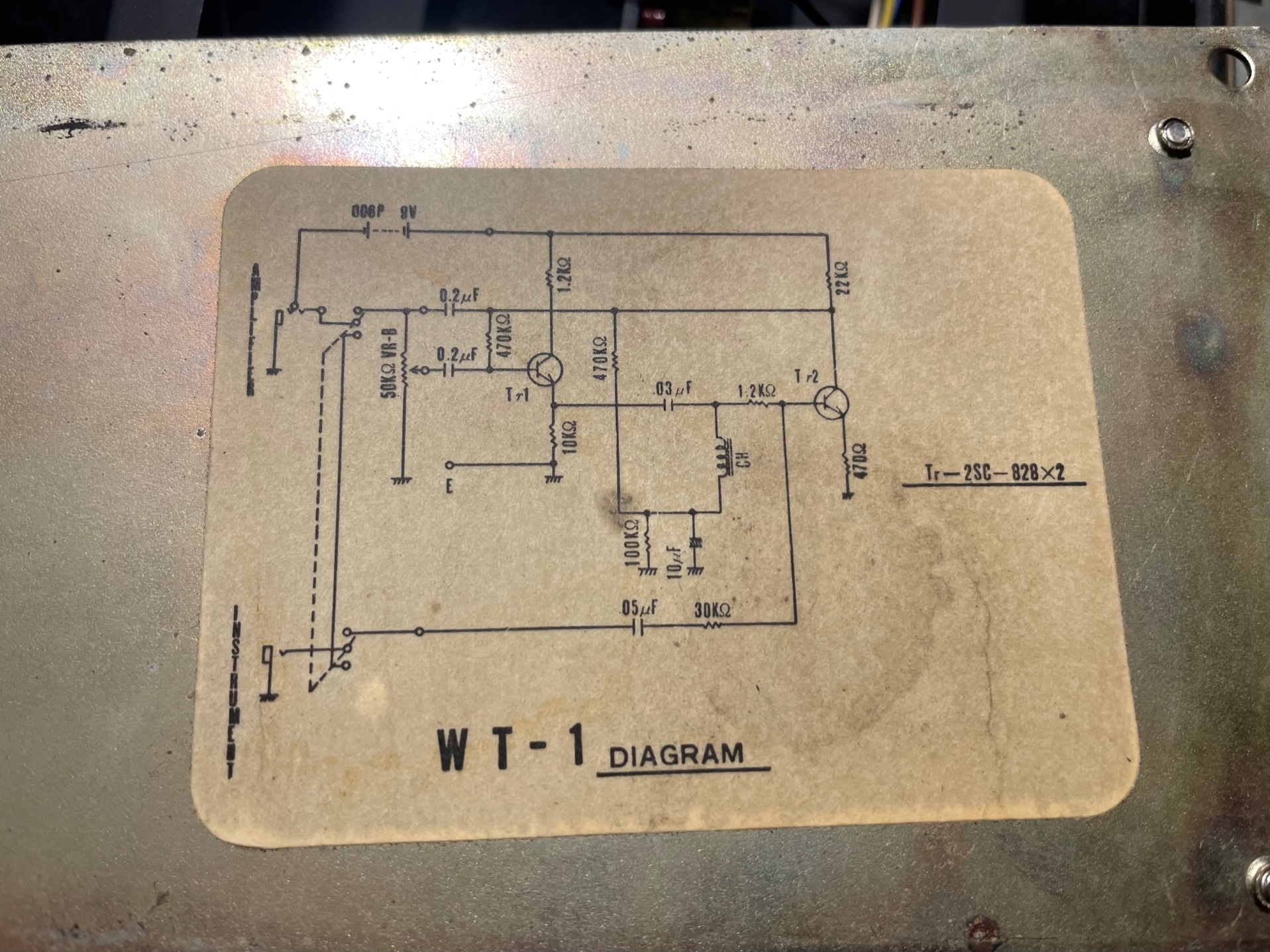 |
The schematic is conveniently on the inside of the bottom cover. What is actually on the PCB is a little different from what is shown on the schematic. The main difference is that the input cap is 10uF and not 0.2uF. |
 |
It's a little faded but the top of the bypass switch has the Shin-Ei logo on it. Kinda cool... |
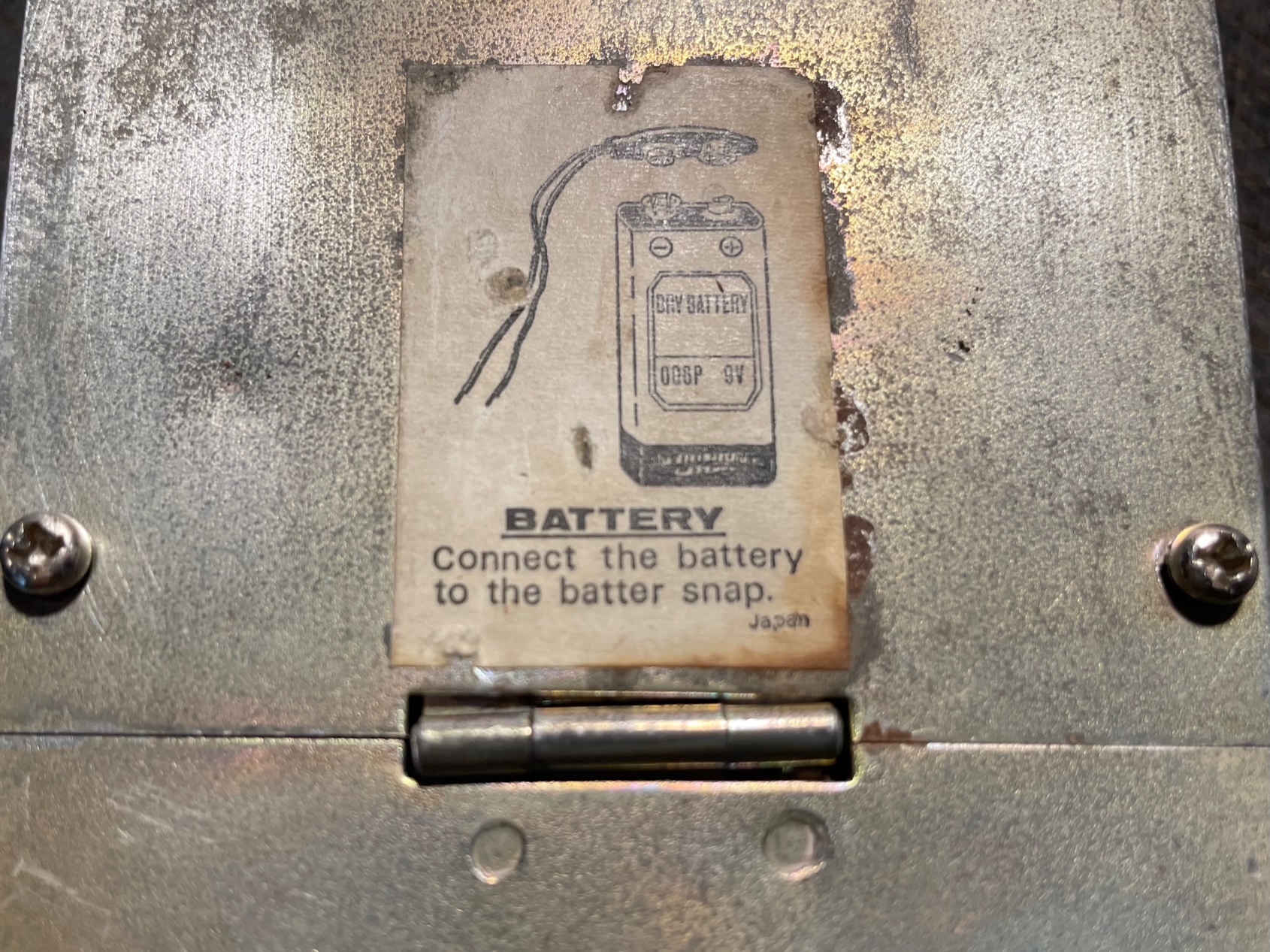 |
Amazingly, this sticker on the bottom has survived all these years. I'm still looking for the "batter snap". |
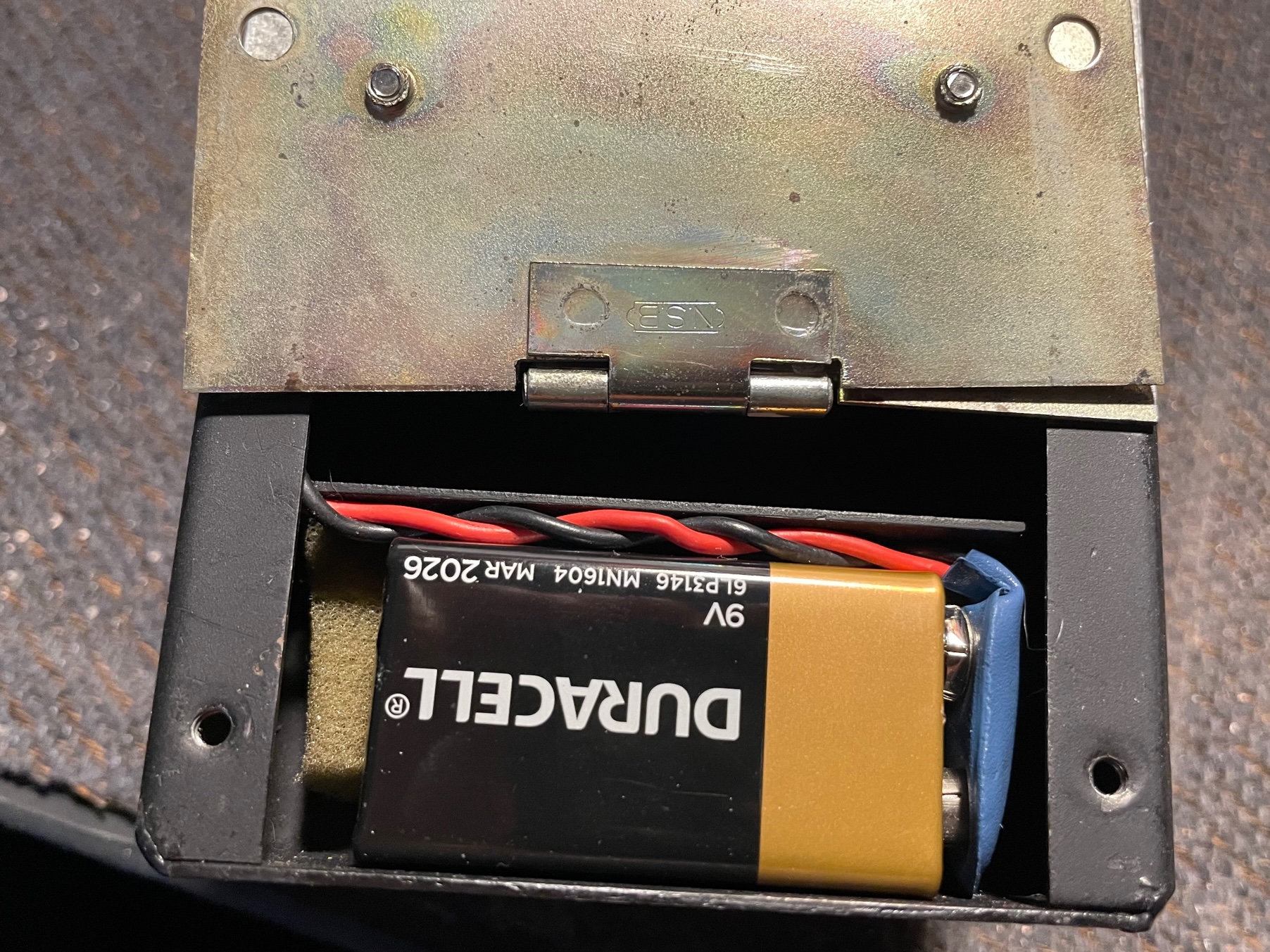 |
I like how the battery door is hinged. They don't make things like they used to... look at the fat wires on that battery snap! |
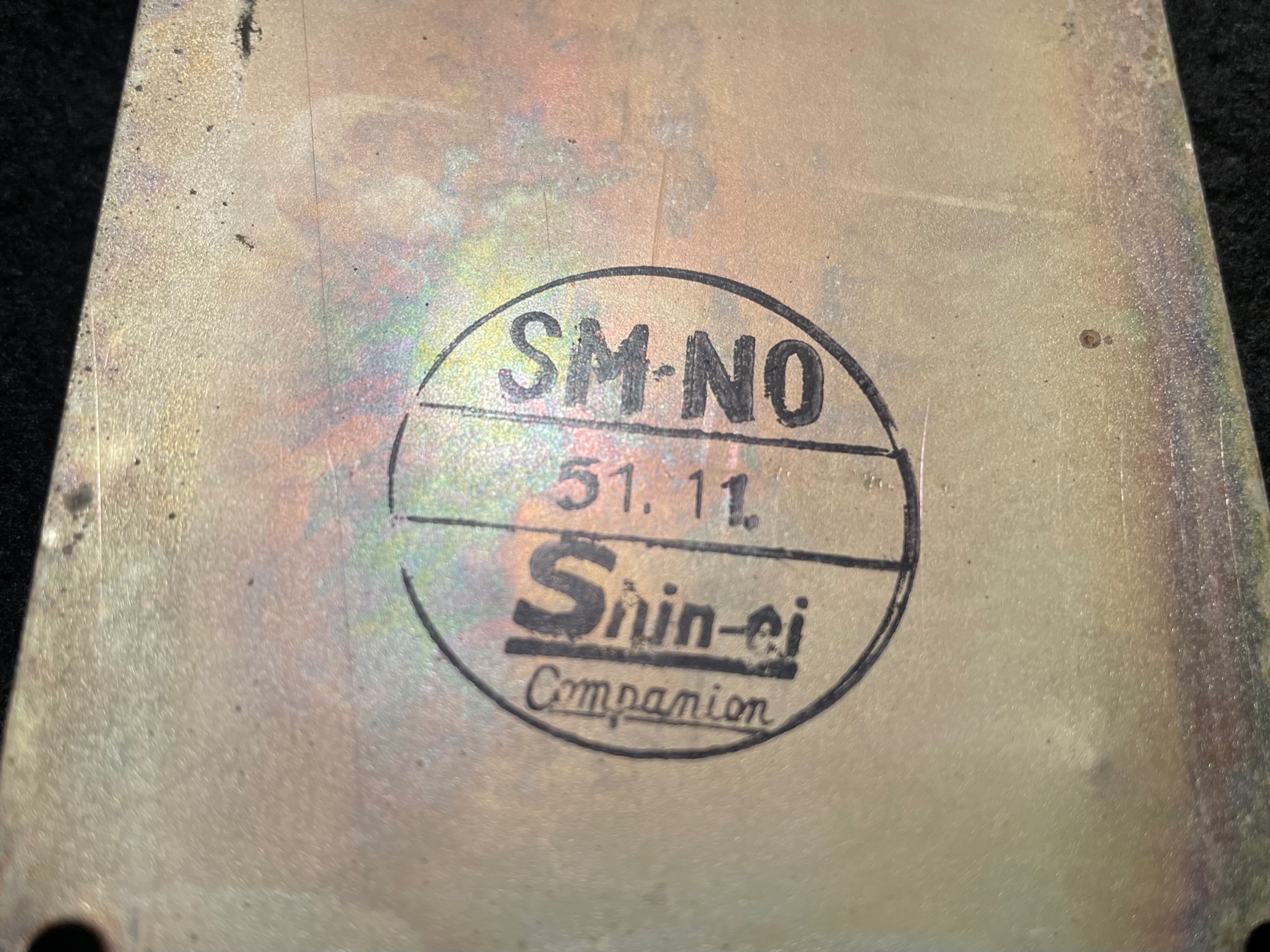 |
This cool stamp is on the inside of the bottom cover (OK, I collect stamps and I like neat cancellations). I'm not 100% sure but I think it is a date code that indicates that at least the bottom cover was made Nov. 1, 1975. The pot has a date code of 4th week of 1976, so I guess we could say this example is actually from 1976. |
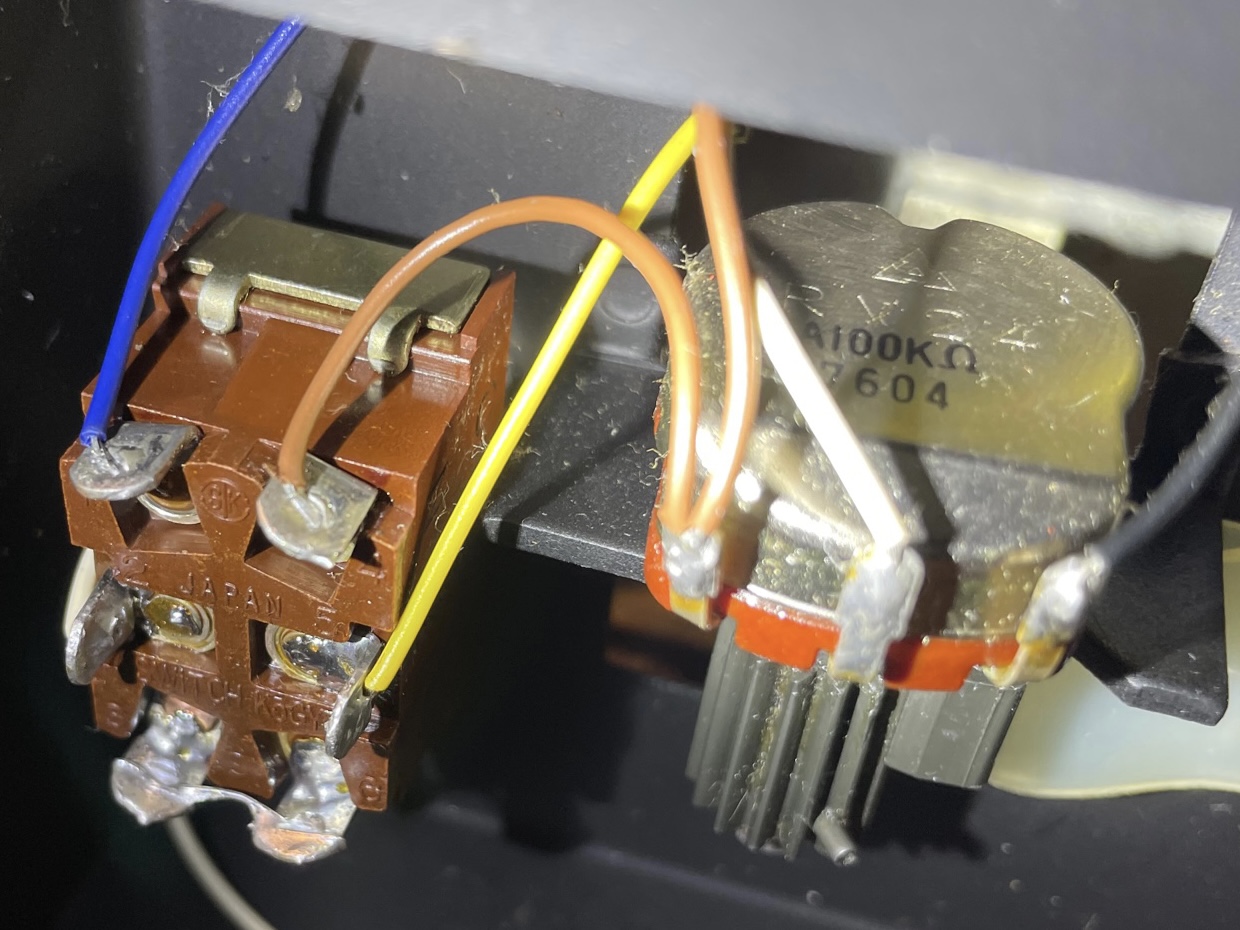 |
Speaking of the pot, here it is. Stamped into the body is "RV 24", which indicates that it is a heavy duty military type. Date code is "7604" which indicates that it was made in the 4th week of 1976. It is a 100K audio taper. Not sure who manufactured it. The ON-ON DPDT switch is wired true bypass and is rated for 6 amps at 250V. |
 |
Here is the "treadle" separated from the bottom half. The action of the "treadle" was very sloppy, a lot of side to side movement was happening at the toe end. I fixed that by inserting washers between the "treadle" and where the screws attach it to the bottom half. There was about 1.5mm of space on both sides before I inserted the washers. That was a major improvement and it fixed what was really my only complaint about the pedal. |
This wah pedal has a very interesting sound. It's completely different from anything else that I have, and I actually like it. It has a sort of TDK5103 inductor Thomas Organ wah quality to it but centered around a lower frequency range. Also is not just another wah pedal using a straight copy of the original circuit patented by Brad Plunkett in 1967. I also like it because it's from the time when I was a kid, when I watched Japanese made Godzilla movies on TV and used many things that were made in Japan. In any case, the main reason I wanted to get my hands on one of these is because I wanted to see how using a transformer instead of an inductor in a wah circuit works/sounds. I am not one of these people that believe that the inductor is the magic of a wah pedal - it's only function is to make the circuit a resonant circuit. However, a transformer is a bit different than an inductor and I wanted to see how the two compare. Curve tracer testing revealed that its characteristics are exactly what I expected - no saturation or other anomolies to be seen between 30 Hz and 30+ kHz.

